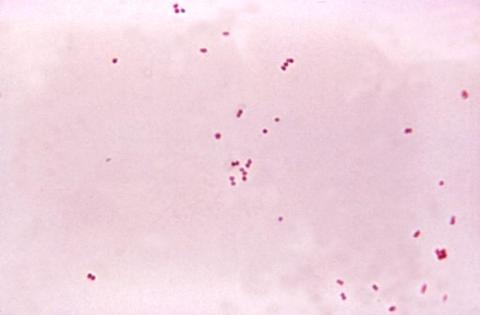Meninigitis - knowing the symptoms can save lives

Meningitis is potentially a life-threatening disease, therefore during Meningitis Awareness Week (19–25 September 2011), the Public Health Agency (PHA) wants to raise awareness in the community and across all age ranges about the signs and symptoms of this serious disease.
Teenagers and young adults (14–24 years old) are one of the most at-risk groups. As a result, all young people in this age group, particularly those just returning to universities, should be aware of the disease and should also watch out for the signs and symptoms in their friends.
Dr Lorraine Doherty, Assistant Director of Public Health (Health Protection), PHA, said: “Coming into the colder months there is a tendency to see more cases of meningococcal meningitis, which is why it is particularly important for everyone to familiarise themselves with signs and symptoms. People need to make it their mission to know the symptoms as meningitis and septicaemia are so dangerous; they can kill in a few hours.
Meningitis is most commonly caused by the meningococcus bacterium. It causes inflammation of the brain lining and/or septicaemia (blood poisoning). Infection can occur at any age, though the majority of infections occur in children under four years old.
Early symptoms of the disease may include:
- sudden onset of high fever;
- a severe and worsening headache without any other obvious cause;
- severe neck stiffness;
- dislike of bright lights;
- very cold hands and feet;
- drowsiness that can deteriorate so someone is difficult to wake or even unconscious;
- a rash that does not fade when pressed with a glass (this is due to bleeding under the skin).
Babies with meningococcal disease tend to be irritable when picked up and have a high-pitched cry, stiff body and jerking movements.
Dr Doherty added: “Symptoms of meningitis are often non-specific and easily mistaken for other illnesses such as flu, but the disease can come on very quickly and it is important to seek urgent medical attention if you think meningitis is occurring.
“A very important sign is a rash which does not disappear if a glass is pressed against it. If someone develops this then they need urgent medical attention. It can appear anywhere on the body so it is important to check under clothing. However the rash doesn’t always appear, so don’t wait for it to appear before seeking medical attention if other signs are present.”
It is important to note that the meningitis C vaccine, part of the childhood vaccination programme, only protects against one form of the infection, so parents should still remain vigilant.
Health Minister Edwin Poots said: "Meningitis is extremely serious and can have a devastating effect. Meningitis Awareness Week provides an excellent opportunity for us all to familiarise ourselves with the signs and symptoms of this potentially life-threatening disease.
I would urge everyone to be vigilant against the signs of meningitis and seek urgent medical attention if you think you or a member of your family may be suffering from the disease - it could save a life."
Further information can be found on www.meningitisuk.org
Contact the PHA Press Office on 028 9031 1611.
Meningitis symptoms in babies are:
- high temperature, fever, possibly with cold hands and feet;
- vomiting or refusing feeds;
- baby may be floppy, dislike being handled;
- high-pitched moaning, whimpering cry;
- difficult to wake or lethargic;
- non-blanching rash (doesn’t disappear when a glass is pressed against it).
Meningitis symptoms in adults and children are:
- high temperature, fever, possibly with cold hands and feet;
- vomiting;
- neck stiffness;
- non-blanching rash (doesn’t disappear when a glass is pressed against it);
- drowsiness;
- dislike of bright lights;
- joint or muscle pain;
- fits.
Meningitis is the inflammation of the linings of the brain and spinal cord, while septicaemia is the blood poisoning form of the disease. These two conditions have different sets of symptoms and may occur separately or together. Additionally, they may be caused by a variety of different organisms, including bacteria, viruses and fungi. When caused by meningococcal bacteria, these two conditions together are known as meningococcal disease.
